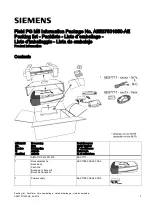
Vig410P Motherboard Manual
93
Chapter 5: System BIOS
Introduction
This chapter describes the Phoenix BIOS
™
Setup utility for the Vig410P. The Phoenix
ROM BIOS is stored in a flash chip and can be easily upgraded using a floppy disk-
based program.
What is the BIOS?
The BIOS is the Basic Input Output System used in all IBM® PC, XT
™
, AT®, and
PS/2® compatible computers. The Phoenix BIOS stores the system parameters, types
of disk drives, video displays, etc. in the CMOS. The CMOS memory requires very little
electrical power. When the computer is turned off, a backup battery provides power to
the CMOS Logic, enabling it to retain system parameters. Each time the computer is
powered on the computer is configured with the values stored in the CMOS Logic by
the system BIOS, which gains control at boot up.
The Power-On sequence
When the computer is first switched on, certain instructions in the BIOS are executed to
test various parts of the machine. This is known as the POST (Power-On Self Test)
routine. When you switch the computer on (or when you press the Reset button or
press <Ctrl> + <Alt>+ <Delete> keys, which has the same effect), you can see on the
monitor that it counts through the memory, testing it. The floppy disk drives are then
accessed and tested, and the various interfaces are checked. If there are any errors, a
message is displayed on the screen.
















































